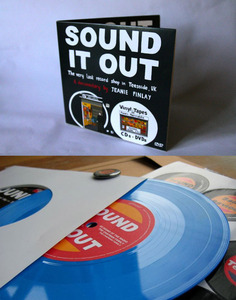Ways to Distribute Merchandise
I recently posted a short piece about innovative merchandise. Here is a quick rundown on the different ways to sell your merch! Let me know what you think!
Creating Innovative Merchandise
Its the IFP Film Week in NYC where I just was for the IFP Lab and the new IFP PMD Lab – so with that in mind – I am posting my new clip about merchandise and an intro to innovative merchandise.
Excerpt: Insiders Guide To Independent Film Distribution
Excerpt from “Insiders Guide To Independent Film Distribution” (2nd Edition, Focal Press) by Stacey Parks. Available in paperback and kindle versions at www.FilmSpecific.com/Book. Interview With Filmmaker Jon Reiss On Target Audience Q: Tell us about Target Audience and what will happen if a filmmaker doesn’t identify this early on in the process? A: To me […]
Keys to a Successful Film Launch Pt 1
Keys to a Successful Film Launch Pt 1 By Jon Reiss and Sheri Candler For the past six months, my company, Hybrid Cinema, has been working on the release of Bob Hercules’s new documentary film Joffrey: Mavericks of American Dance,about the history of the Joffrey ballet. This is a capsule post to explain the highlights of launching […]
Sound It Out!

Over the last five years an independent record shop has closed in the UK every three days. SOUND IT OUT (75 mins) is a documentary portrait of the very last surviving vinyl record shop in Teesside, North East England. A cultural haven in one of the most deprived areas in the UK, SOUND IT OUT […]
Back to Writing – 3 More Books
I have embarked on writing again and have two new books in the works and one more on the horizon. First off, I am writing a book on the Producer of Marketing and Distribution or PMD.
How to Self-distribute Online: Using E-junkie to Create an Automated Business Part 2
Creating and selling a Quicktime file is a lot easier than creating and selling a DVD, yet many filmmakers seem to be reluctant to make their movies available as a download. I believe this stems from an overblown fear of piracy. As far as the indie world is concerned, I believe you’re losing money by not offering your video as a download.
How to Self-distribute Online: Using E-junkie to Create an Automated Business Part 1
We’ve been exploring alternatives to fulfillment for filmmakers in the last month or two. Many filmmakers are actually doing self fulfillment when their numbers are low – and using a shopping cart such as E-Junkie. J.X. Carrera is a PMD who specializes in online media and international entertainment, particularly in regards to China and Japan. […]
Guest Post: How to Maximize Revenue Selling on Amazon
Today’s guest post comes from filmmaker Jed Riffe who I met this year at Slamdance. He told me that he was surprised at how little money filmmakers make selling their films through Amazon and that he had a system that maximized return from Amazon sales at 80%. I of course immediately asked him to write […]
Guest Post: Fulfilment Options from Breakthrough Distribution
First off – the next Totbo workshop is in Vancouver in just 2 weeks: February 26 and 27th being organized by DOC BC with support from the NFB and British Columbia Film. If you are in the Vancouver area – I hope to see you there! Today’s guest post is from Jeff Rosen from […]